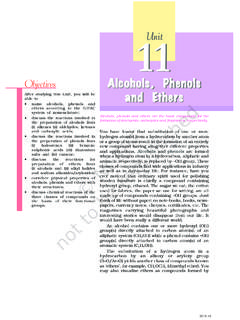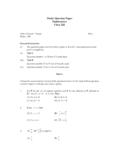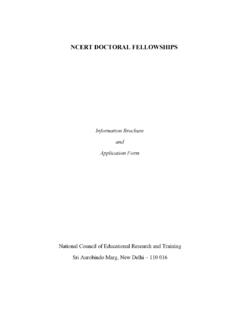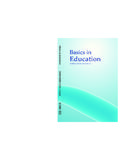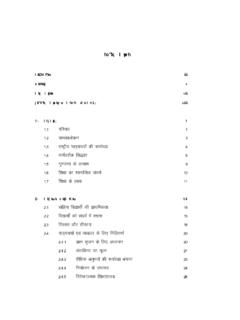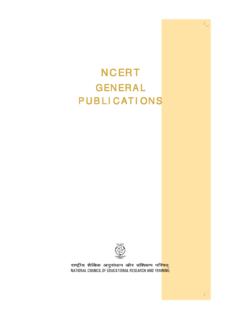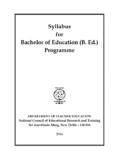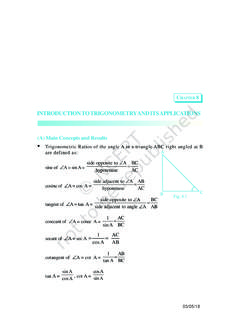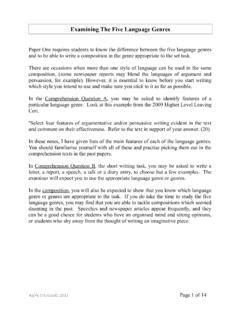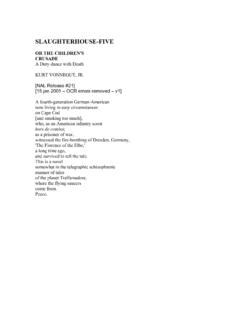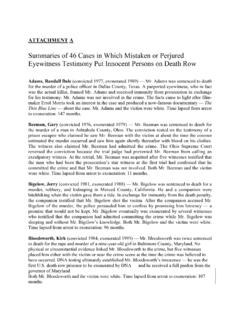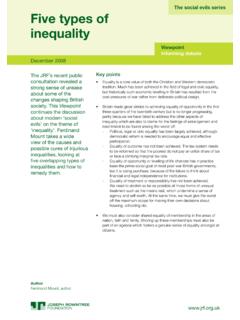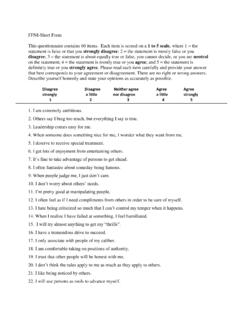Transcription of Chapter Five MAGNETISM AND MATTER
1 INTRODUCTIONM agnetic phenomena are universal in nature. Vast, distant galaxies, thetiny invisible atoms, humans and beasts all are permeated through andthrough with a host of magnetic fields from a variety of sources. The earth smagnetism predates human evolution. The word magnet is derived fromthe name of an island in Greece called magnesia where magnetic oredeposits were found, as early as 600 BC. Shepherds on this islandcomplained that their wooden shoes (which had nails) at times stayedstruck to the ground. Their iron-tipped rods were similarly affected. Thisattractive property of magnets made it difficult for them to move directional property of magnets was also known since ancienttimes.
2 A thin long piece of a magnet, when suspended freely, pointed inthe north-south direction. A similar effect was observed when it was placedon a piece of cork which was then allowed to float in still water. The namelodestone (or loadstone) given to a naturally occurring ore of iron-magnetite means leading stone. The technological exploitation of thisproperty is generally credited to the Chinese. Chinese texts dating 400BC mention the use of magnetic needles for navigation on ships. Caravanscrossing the Gobi desert also employed magnetic Chinese legend narrates the tale of the victory of the emperor Huang-tiabout four thousand years ago, which he owed to his craftsmen (whomChapter FiveMAGNETISM ANDMATTER2021 22 Physics174nowadays you would call engineers).
3 These engineers built a chariot on which they placed a magnetic figurewith arms outstretched. Figure is an artist sdescription of this chariot. The figure swiveled aroundso that the finger of the statuette on it always pointedsouth. With this chariot, Huang-ti s troops were ableto attack the enemy from the rear in thick fog, and todefeat the previous Chapter we have learned that movingcharges or electric currents produce magnetic discovery, which was made in the early part of thenineteenth century is credited to Oersted, Ampere, Biotand Savart, among the present Chapter , we take a look at magnetismas a subject in its own of the commonly known ideas regardingmagnetism are:(i)The earth behaves as a magnet with the magneticfield pointing approximately from the geographicsouth to the north.
4 (ii)When a bar magnet is freely suspended, it points in the north-southdirection. The tip which points to the geographic north is called thenorth pole and the tip which points to the geographic south is calledthe south pole of the magnet.(iii)There is a repulsive force when north poles ( or south poles ) of twomagnets are brought close together. Conversely, there is an attractiveforce between the north pole of one magnet and the south pole ofthe other.(iv)We cannot isolate the north, or south pole of a magnet. If a bar magnetis broken into two halves, we get two similar bar magnets withsomewhat weaker properties.
5 Unlike electric charges, isolated magneticnorth and south poles known as magnetic monopoles do not exist.(v)It is possible to make magnets out of iron and its begin with a description of a bar magnet and its behaviour in anexternal magnetic field. We describe Gauss s law of MAGNETISM . We thenfollow it up with an account of the earth s magnetic field. We next describehow materials can be classified on the basis of their magnetic describe para-, dia-, and ferromagnetism. We conclude with a sectionon electromagnets and permanent THE BAR MAGNETOne of the earliest childhood memories of the famous physicist AlbertEinstein was that of a magnet gifted to him by a relative.
6 Einstein wasfascinated, and played endlessly with it. He wondered how the magnetcould affect objects such as nails or pins placed away from it and not inany way connected to it by a spring or The arm of the statuettemounted on the chariot always pointssouth. This is an artist s sketch of oneof the earliest known compasses,thousands of years 22 MAGNETISM andMatter175We begin our study by examining iron filings sprinkled on a sheet ofglass placed over a short bar magnet. The arrangement of iron filings isshown in Fig. The pattern of iron filings suggests that the magnet has two polessimilar to the positive and negative charge of an electric dipole.
7 Asmentioned in the introductory section, one pole is designated the Northpole and the other, the South pole. When suspended freely, these polespoint approximately towards the geographic north and south poles,respectively. A similar pattern of iron filings is observed around a currentcarrying The magnetic field linesThe pattern of iron filings permits us to plot the magnetic field lines*. This isshown both for the bar-magnet and the current-carrying solenoid inFig. For comparison refer to the Chapter 1, Figure (d). Electric fieldlines of an electric dipole are also displayed in Fig.
8 (c). The magnetic fieldlines are a visual and intuitive realisation of the magnetic field. Theirproperties are:(i)The magnetic field lines of a magnet (or a solenoid) form continuousclosed loops. This is unlike the electric dipole where these field linesbegin from a positive charge and end on the negative charge or escapeto infinity.(ii)The tangent to the field line at a given point represents the direction ofthe net magnetic field B at that Thearrangement of ironfilings surrounding abar magnet. Thepattern mimicsmagnetic field pattern suggeststhat the bar magnetis a magnetic dipole.
9 *In some textbooks the magnetic field lines are called magnetic lines of nomenclature is avoided since it can be confusing. Unlike electrostaticsthe field lines in MAGNETISM do not indicate the direction of the force on a(moving) The field lines of (a) a bar magnet, (b) a current-carrying finite solenoid and(c) electric dipole. At large distances, the field lines are very similar. The curveslabelled i and ii are closed Gaussian 22 Physics176(iii)The larger the number of field lines crossing per unit area, the strongeris the magnitude of the magnetic field B.
10 In Fig. (a), B is largeraround region ii than in region i .(iv)The magnetic field lines do not intersect, for if they did, the directionof the magnetic field would not be unique at the point of can plot the magnetic field lines in a variety of ways. One way isto place a small magnetic compass needle at various positions and noteits orientation. This gives us an idea of the magnetic field direction atvarious points in Bar magnet as an equivalent solenoidIn the previous Chapter , we have explained how a current loop acts as amagnetic dipole (Section ). We mentioned Ampere s hypothesis thatall magnetic phenomena can be explained in terms of circulating that the magnetic dipole moment massociated with a current loop was definedto be m = NIA where N is the number ofturns in the loop, I the current and A thearea vector (Eq.)
